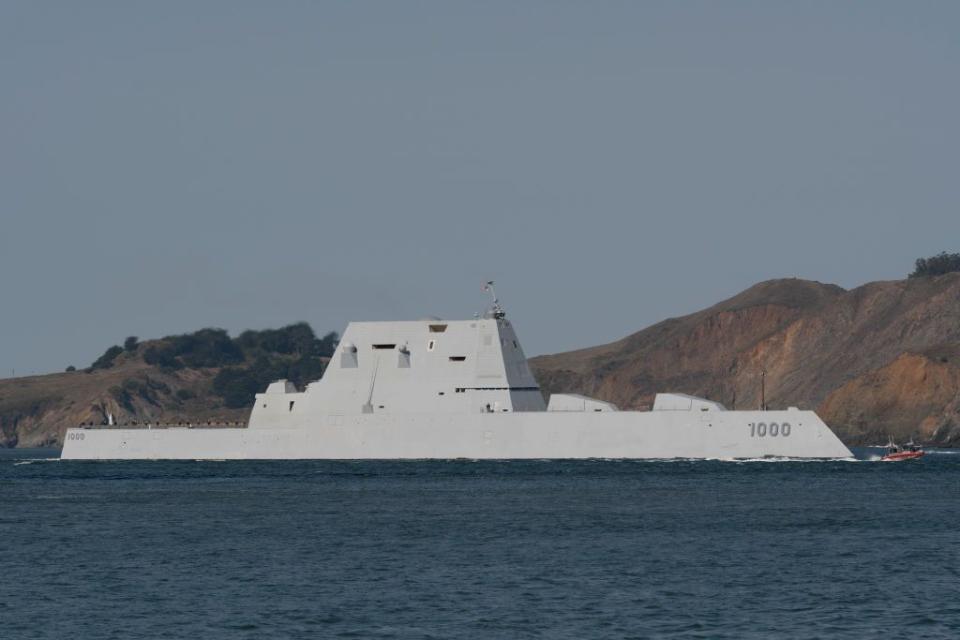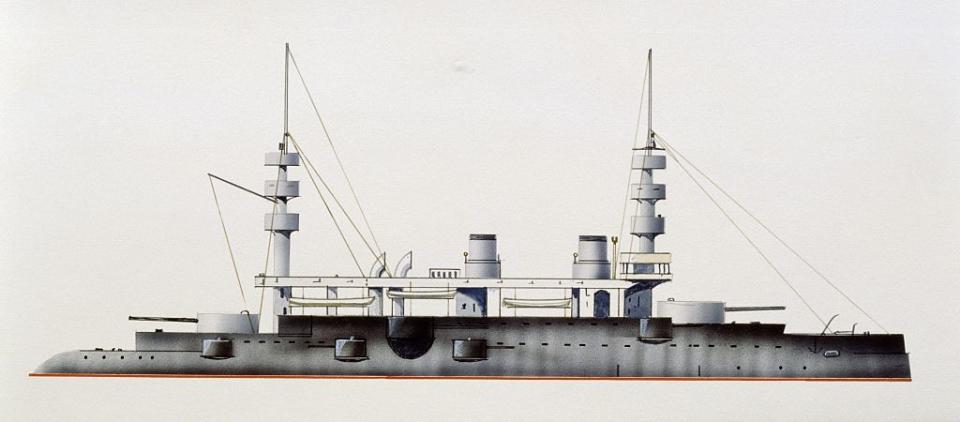Good News: The USS Zumwalt Can Stay Afloat in Rough Seas
The stealth destroyer USS Zumwalt recently passed rough water testing.
The testing was meant to validate the ship's ability to operate in rough seas.
German engineers expressed concern that the ship's knife-like hull could lead it to flounder or even capsize.
The guided missile destroyer USS Zumwalt recently passed a pair of Rough-Water Trial tests, in which it faced bracing winds, waves, and other intense conditions. Engineers from the Carderock and Philadelphia Divisions of the Naval Surface Warfare Centers (NSWC) executed the trials to evaluate the ship's seakeeping and structural performance.
🚢 You love badass ships. So do we. Let's nerd out over them together.
Navy engineers came away from the tests, which involved sailing the ship directly into two storms with waves up to 20 feet high, satisfied that the Zumwalt's unconventional hull form is stable. That's good news, as some naval architects have expressed doubts that the 15,500-ton destroyer could even stay afloat.
Engineers completed the first phase of the Rough-Water Trials in October 2019, wherein the team assessed the Zumwalt's "seakeeping behavior, structural response, and operability" in "mission-relevant conditions," according to an NSWC press release from earlier this month. That test also included an evaluation of how the ship's motion impacted crew performance.
During the second phase of testing, which took place in October and November 2020, crews put the Zumwalt through more severe wave conditions. The ship twice entered rough seas as high as Sea State 6: once near San Francisco, and the second near Ketchikan, Alaska. According to the Douglas Sea Scale, which measures the heights of waves and the swell of the sea, that corresponds to wave heights of 13 to 19.6 feet.

➡️ Gear We Love: The Best Inflatable Boats
The three Zumwalt destroyers are the first class of Navy warships built with stealth in mind. The ships feature trapezoidal hulls; tall, featureless superstructures; and lots of flat surfaces. The idea is to give radar as few surfaces as possible to bounce off of, diverting radio waves elsewhere. As a result, the 610-foot-long warship reportedly has the radar signature of a small fishing boat.

The Zumwalt's unique bow—which angles downward instead of upward—has led to allegations the ship could be unstable in rough seas. This "tumblehome" design was popular at the turn of the 19th century, but engineers later abandoned it due to reports that ships featuring the bow style performed poorly at sea.
In 2017, German engineers sounded the alarm about the Zumwalt's hull design, saying it was more prone to capsizing in Sea State 8 (30- to 46-foot waves) than conventional designs. However, Navy sources told The Daily Beast the Zumwalt's size and improved design made the new ships more stable than older tumblehome designs.
Later this month, engineers with NSWC will replicate the conditions of the second phase of Rough-Water Trials. Only this time, it will be at model scale in Carderock's giant wave pool, the Maneuvering and Seakeeping Basin.
"Effectively, we will be re-running critical portions of the trial at model scale onsite at Carderock," Rough-Water Trials Director Stephen Minnich said in the release. "This will enable us to quantify the differences between our model-scale predictions and our full-scale observations."
🎥 Now Watch This:
You Might Also Like

